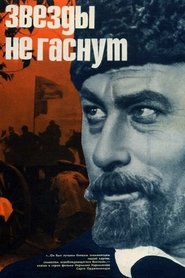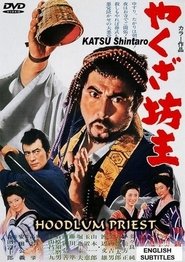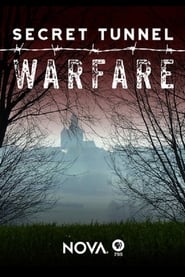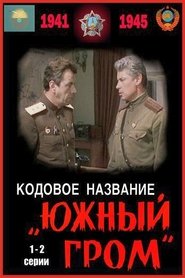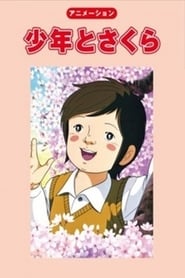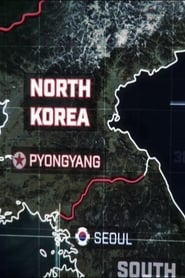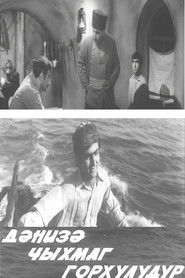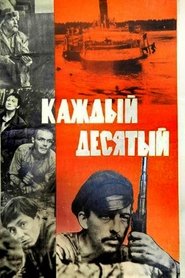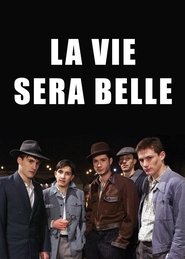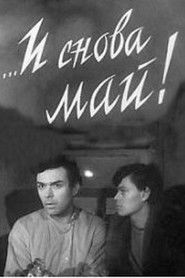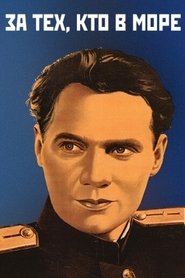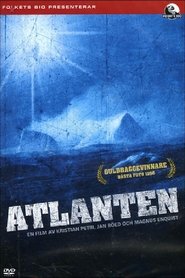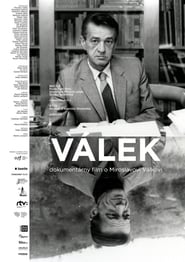Top Rated History Movies on Pantaflix - Page 500
-
The Stars Don't Fade
1971
The Stars Don't Fade
1971
star 9The film consists of several novels reproducing the most vivid pages of the biography of the first Chairman of the Council of People's Commissars of Azerbaijan Nariman Narimanov (1870-1925). -
For It's Weight in Gold
1984
star 5Former Red Army combat commander Zavgorodniy is appointed head of the Sivash salt mines. Salt is worth its weight in gold for the young Soviet republic. Zavgorodniy must restore the mines' operations despite fierce resistance from the White Army. -
The Hoodlum Priest
1967
The Hoodlum Priest
1967
star 7The first film in the 2 part series about Ryuzen, a renegade martial-arts priest who, in addition to breaking all the commandments against sex and gambling, opens his own gambling den in direct defiance of the local yakuza boss. Exciting action and a twisty plot this movie breaks new barriers in Japanese cinema. Katsu Shintaro is superb in one of his better non-Zato Ichi roles as he fights off the advances of a love-lorn woman and risks his life to defeat the powerful gambling boss who has a stranglehold on the town. -
An Excavation of Us
2017
An Excavation of Us
2017
star 6The shadows of Napoleon’s army fall upon their boat traveling through the mysterious cave named after Marie Jeanne, a female soldier who fought in the Haitian Revolution. It is this battle inside her cave that will become the most successful slave revolution in history. -
NOVA: Secret Tunnel Warfare
2016
star 7In the thick of World War I, Allied forces attempt the daring feat of planting over a million pounds of explosives beneath enemy lines. -
NOVA: Secrets of Noah's Ark
2015
star 6Historians, boat builders and experts examine the tale of Noah's Ark, studying ancient texts and attempting to rebuild a forerunner of the Ark itself. -
Personal Happiness
1977
Personal Happiness
1977
star 6The distinctive traits of the Doroshin family are hard work, courage, and principledness. Pavel Nikolaevich is a war veteran and the chief engineer of a factory, while Anastasia Mikhailovna is the head of a university department and an active participant in the partisan movement. Their eldest son, Ilya, a sanitary doctor, demands the closure of one of the city's enterprises. However, war criminals, who are hiding from retribution, know that the Gestapo archives are hidden in the building's basement and fear that the documents might be discovered. Terrified of exposure, they try to prevent Ilya from carrying out this action and attempt to discredit the Doroshins. -
Code Name "Southern Thunder"
1980
star 5Soviet WW2 film about operation that resulted in liberation of.Romania and Moldova from the Nazis. -
The Cherry Tree
1983
The Cherry Tree
1983
star 5In postwar Tokyo, while his mum works, Taichi spends his days alone and misses his dad who was killed in the war. Through his friendship with an old man who tends a seemingly dead cherry tree, Taichi learns about the tree and gradually becomes more positive. (Source: Treasures of the Heart) -
North Korea: Dark Secrets
2018
star 8This two-hour special reveals the complicated history, extreme politic, and rigid societal standards that have created a legacy of internal oppression and external aggression. As the North Korean people suffered famine, labor camp and public executions, the Kim regime spent three generations relentlessly pursuing nuclear ambitions. They operate as a criminal syndicate, using counterfeit money, drugs and cyber espionage to fund their war machine. Now, with weapons rivaling the world’s superpowers, their aggressive rhetoric has pushed the world to a crisis point. -
It's Dangerous to Put Out to Sea
1976
star 9The film is about special sea expedition which put out to sea to deliver oil to Russia at the cost of their lifes. -
Every Tenth
1984
Every Tenth
1984
star 7Five Red Army soldiers, who found themselves in the rear of the Kolchak troops, captured an enemy armored car and captured an intelligence officer. From him they learn that soon a steamer with weapons and ammunition for the upcoming white counteroffensive is due to pass along the river. How to stop the ship, capture it, and then transport such a valuable cargo through ambushes and cordons of Kolchak troops entrenched on both sides of the river?.. -
Life Will Be Beautiful
2007
star 6Five young men from well-off families, whom fate never intended to be partisans in an occupied Paris, so different from one other and yet so close, reject the French defeat and resulting German occupation and decide to take on Nazi Germany. -
And It's May Again
1968
And It's May Again
1968
star 6A group of Bolsheviks in 1908 attempts to establish the publication of underground literature under police terror. -
The Poet
1991
The Poet
1991
star 8The film is dedicated to the memory of the great Azerbaijani poet Muhammad Fuzuli by the relic-gazalakh, and the lyric poet Aliaga Vahid. The poet's life is presented in chronological order. The authors do not clearly indicate the names of the people who covered Vahid. They tried to create a generalized artistic image using some of the master poet's masterpieces from his difficult life. -
For Those Who Are at Sea
1948
star 4The film is about the sailors who fought on torpedo boats in the Great Patriotic war. -
The Atlantic
1995
The Atlantic
1995
star 6A documentary about the islands in the Atlantic, about the islanders and their stories. -
Smoke of the Fatherland
1980
star 6The Great Russian scientist, famous politician and poet M.Lomonosov is severely ill. Understanding that there is not much time left for him to live, he decides to visit his beloved small native town. Taking a coach, he heads for the motherland of his ancestors. A shaky road raises thoughts and reminiscences about his days of youth, about the time when he was young and unknown, how he made first steps on his long way of the truth comprehension. He recollects early death and funeral of his mother, the repeated, and not very successful marriage of his father, hatred of stepmother, care of godfather, who gave him the books of Peter the Great, wandering monk, who taught him the fundamentals of science, Latin, and, of course, his first love. -
Válek
2018
Válek
2018
star 1Miroslav Válek was a Slovak poet whose sensitive and intimate work clashed with his political engagement in the communist party. How to approach this discrepancy, how to cope with it? Can one read poems while disregarding their author?
 Netflix
Netflix
 Amazon Prime Video
Amazon Prime Video
 Apple iTunes
Apple iTunes
 Apple TV Plus
Apple TV Plus
 Disney Plus
Disney Plus
 Google Play Movies
Google Play Movies
 Paramount Plus
Paramount Plus
 Hulu
Hulu
 HBO Max
HBO Max
 YouTube
YouTube
 fuboTV
fuboTV
 Peacock
Peacock
 Peacock Premium
Peacock Premium
 Amazon Video
Amazon Video
 The Roku Channel
The Roku Channel
 AMC+
AMC+
 Kocowa
Kocowa
 Hoopla
Hoopla
 The CW
The CW
 Vudu
Vudu
 Starz
Starz
 Showtime
Showtime
 PBS
PBS
 Pantaflix
Pantaflix
 FXNow
FXNow
 Tubi TV
Tubi TV
 Kanopy
Kanopy
 Comedy Central
Comedy Central
 Crunchyroll
Crunchyroll
 Microsoft Store
Microsoft Store
 Redbox
Redbox
 Sun Nxt
Sun Nxt
 ABC
ABC
 DIRECTV
DIRECTV
 Crackle
Crackle
 Fandor
Fandor
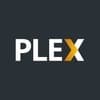 Plex
Plex
